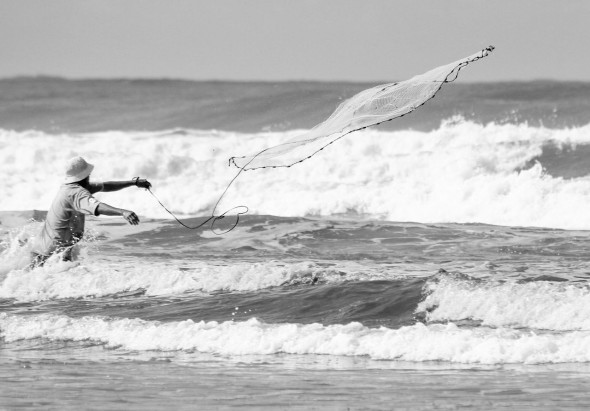Guiones Surf Photo of the Week
We’re not always trying to catch only waves in the surf zone, the ordered chaos of tumbling rollers rushing toward shore. It is a cauldron of energy, boiling with nutrients and marine life. Here, the work of throwing the cast net becomes Art. For the net to elegantly “spread” when thrown, it must first be bundled and folded with great care, much like the packing of a parachute. Then, once surface texture on the water betrays the small fish’s location, the thrower must execute with just the right combination of wrist, arm and waist- rotating- to place the blooming net, as it opens and lands, atop the unsuspecting school. Weights woven into the net’s perimeter provide not only the momentum for “the throw”, but also the means by which the net rapidly sinks, pinning the fish under its descending umbrella. The retrieving line doubles as a cinch chord, closing the umbrella tightly at the base so the fish do not escape.
This fishing method is most often used for “bait”, purposed for catching larger fish. But it is ideal also for simply catching and eating the smaller baitfish themselves for food. We now know that eating lower down on the food chain (think anchovies and sardines) is generally better for the overall ecosystem, leaving progenitors and apex predators to fulfill their valuable roles and reproduce.
The cast net, unlike gill nets and purse seines, is not an indiscriminate killer. After each throw the fisher can inventory what has been caught and quickly put back in the water what is not desired, the organisms known as “by-catch”. This by-catch can be released unharmed, thereby making cast netting a highly specific fishing method void of high incidental kills.
As with Surfing, still photography doesn’t always do it justice. Cast Netting is Poetry in Motion.
photo provided by Surfing Nosara





